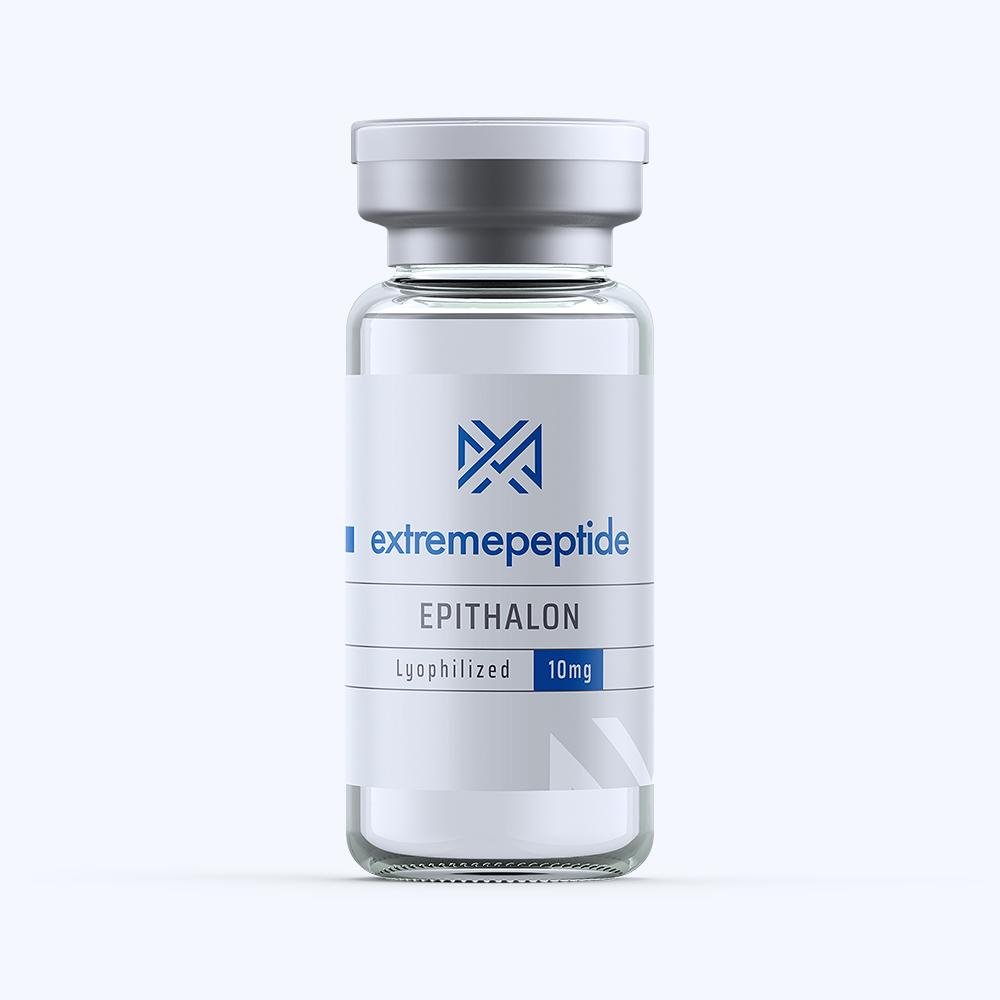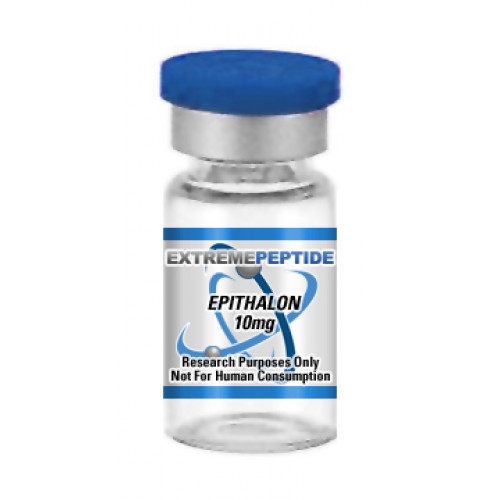The tetrapeptide Epithalon is made up of four amino acids and contains a molecular weight of 390.3459. It has a molecular formula of C14H22N4O9. It can also be known by the following names:
- Epithalone
- Epitalon
- LS-72251
- CID2192042
Epithalon Basics

According to scientific study that has been based on animal test subjects, Epithalon is derived from the pineal gland. This endocrine gland, also known as the pineal body, conarium, or epiphysis cerebri, is typically associated with regulating several processes relating to growth and development. The peptide has been shown to exhibit a relationship on a cellular level with telomeres; areas of repeating DNA sequences that consist of our nucleic acid bases which are located at the end of chromatids. These areas essentially function to prevent gene degradation near the end of chromosomes.
Specifically, Epithalon has been shown to work in conjunction with telomerase; an enzyme that is responsible for determining the length of telomeres in DNA strands while essentially creating the relevant genetic information. Over time, during the process of cellular division, the levels of telomerase become depleted. This degradation causes the telomeres themselves to become shorter and weaker as cellular division continues. Eventually, the telomeres become short and weak to the point where they can no longer bind the DNA strands properly. When this occurs, the DNA strands become loose and their genetic information becomes compromised. This act of genetic compromise causes animal test subjects’ bodies to misread the data, which inadvertently signals the aging process to commence.
However, Epithalon’s mechanics allow it to have replenishment properties regarding telomerase, meaning that it can allow for the production of the enzyme to hold steady for a longer period of time. This boost in telomerase production enables telomeres to stay longer and stronger for an extended period of time; a process that also causes the aging process to be slowed down.
More than Just Anti-Aging
The majority of scientific study that has been conducted on animal test subjects as it relates to Epithalon is built around its role in the prevention of the aging process. Indeed, its ability to strengthen telomeres and therefore keep the genetic sequence that is bound by it intact plays a vital role in scientific theories regarding the slowing down of an animal test subject’s biological age. However, there is also a pair of secondary studies being conducted and theoretical benefits being determined which are tied to the peptide’s overall functionality.
The first of these studies relates to the prevention or delay in certain diseases and ailments as they relate to the aging process. Conditions such as heart disease, stroke, and dementia are all thought to be brought about in part due to the aging process of animal test subjects. Because of this, it is believed that Epithalon’s effect on keeping the DNA sequence bound by telomeres for a longer period of time could prevent the onset of some of these diseases from happening. The studies built around Epithalon’s functionality could also theoretically aid in helping scientific study on animal test subject to discover signs and sequences that may be present at the onset of these diseases as a means to potentially combat the afflictions at an even earlier level.
The second one of these studies relates to the peptide’s role in the improvement of several regulatory processes found within an animal test subject’s body. As the telomeres break down and the genetic sequence gets compromised, it has been determined that some of the regulatory functions show a tendency to break down over a specific period of time. Some of these functions include breaking down adipose tissue (that is, body fat), maintaining a consistent sense of flexibility, retaining a normal level of energy, and being able to fend off rudimentary illnesses in a consistent manner. However, Epithalon’s ability to boost the length and strength of telomeres has led to the theory that its presence can work to elevate the level at which these regulatory processes can be carried out. Ultimately, the peptide would theoretically enable the animal test subject to enjoy a significantly more efficient level of homeostatsis.
